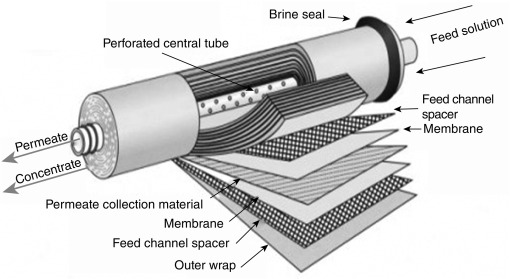Access to clean drinking water is an important part of living a healthy life. The World Health Organization warns us that contaminated water is associated with the spread of diseases such as cholera and polio. Qemi International is a supplier of water treatment solutions for many industries. Recently, we started selling reverse osmosis membranes.
Read on to find out more about this technology, the different types of reverse osmosis membranes, their advantages, and their applications.
Understanding Reverse Osmosis
According to the laws of physics, less saline solutions tend to naturally flow into more concentrated ones. Imagine that you have two containers connected by a passage where a semi-porous membrane serves as a barrier. If you fill one container with clean water and another one with saline water, the clean water will start migrating into the saline water.
Reverse osmosis is the opposite of osmosis. Since it’s not something that occurs in nature, for reverse osmosis to happen, pressure needs to be applied. Once the pressure from a pumping system is supplied, saline water can migrate through the reverse osmosis membrane, becoming desalinated, meaning it would leave harmful particles behind and come out fresh and clean.
Brief History of Reverse Osmosis Membranes
The emergence of reverse osmosis membranes dates back to 1867, when Moritz Traube prepared a membrane to study the process of osmosis. In 1963, cellulose acetate membranes were shown to perform well in salt rejection.
Gulf General Atomics and Aerojet General were the first to deploy reverse osmosis membranes for commercial water purification purposes.
Characteristics of Reverse Osmosis Membranes
By employing reverse osmosis, industries can remove up to 99% of salts, particles, and bacteria from water. Reverse osmosis is effective in treating surface and groundwater. It is used in such industries as pharmaceuticals, food and beverage, and metal finishing.
The general lifespan of reverse osmosis membranes is 3–5 years because chemical changes will inevitably occur within the membranes, leading to a slow decline in performance. Also, compression of the membrane under pressure and temperature would lead to a gradual decrease in the membrane, making it lower and less economical.
Different Types of Reverse Osmosis Membranes
Reverse osmosis membranes can be either cellulose acetate or polysulfone coated with aromatic polyamides. Some advantages of cellulose acetate membranes are that they are resistant to small concentrations of free chlorine and can withstand bacteria attacks. While polyamide membranes can be used at higher temperatures than cellulose acetate, they cannot tolerate chlorine. In fact, bacteria can destroy cellulose acetate. The choice of membranes to use depends on what type of water needs to be treated.
At Qemi International, we take pride in empowering industries around the world to purify water for commercial purposes. We are also committed to sustainability and take care to reduce carbon waste from our supply chain. We are incredibly happy to announce that we now sell reverse osmosis membranes. Contact us today if you have any questions about reverse osmosis membranes or any of our other products and services.

